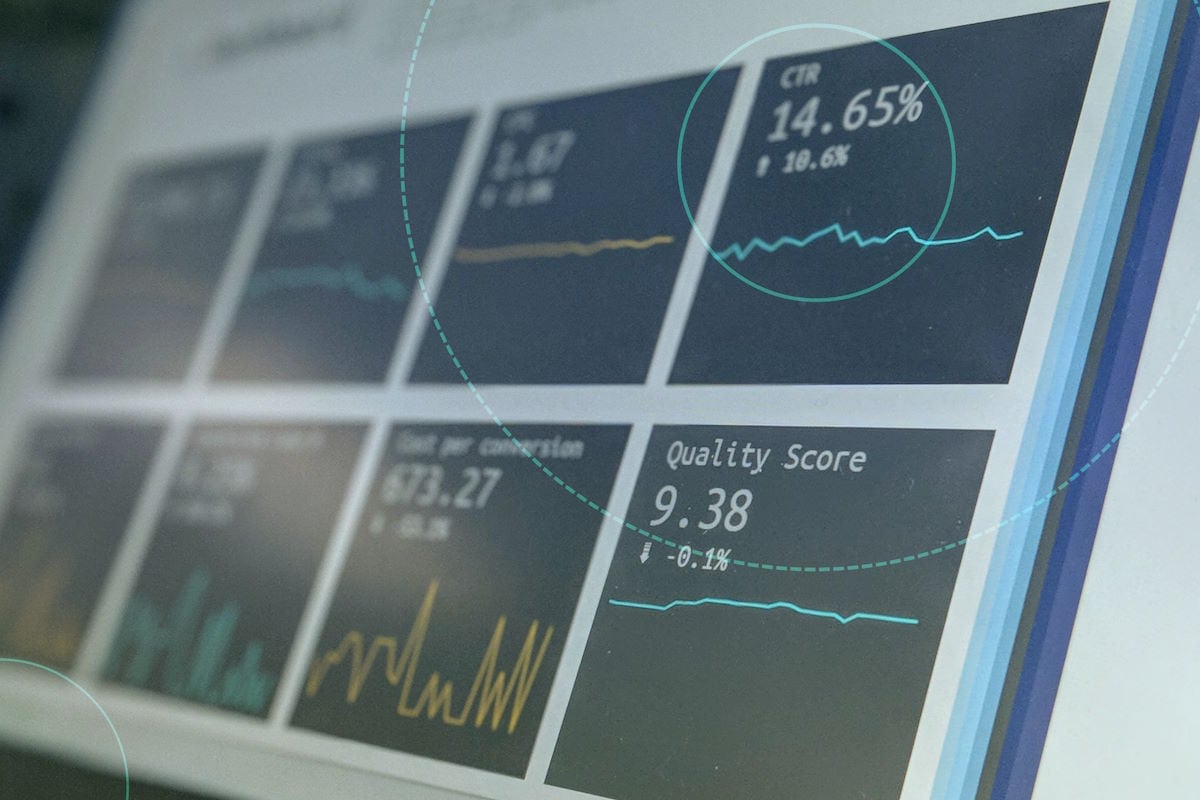This guide will help you find customer acquisition tools that maximize your marketing efforts, because even a marketing artist is only as good as their tools.
Using customer acquisition software can make your marketing campaigns more efficient through bespoke tools and deep analytics.
Today’s attention economy may be the most competitive in the history of marketing. Making sure your product or service gets the focus of potential customers requires more than a nuanced and well-researched strategy. It demands omnichannel efforts and peak execution. And with so many channels to consider, staying on top of them can be time-consuming.
That’s where customer acquisition tools come in. These software solutions and platforms are designed by experts in their fields to make your job as a marketer as smooth as possible. Each offers a suite of features to maximize your campaigns' return on investment (ROI), lowering your customer acquisition costs and bringing in more revenue. With this guide, you’ll be equipped to find the perfect customer acquisition tools for your business.
Discover strategies, metrics, examples and more with Customer Acquisition: A Practical Guide.
Choosing the Right Customer Acquisition Tools for Each Channel
Connected TV (CTV) Advertising
Even as traditional linear TV advertising spend declines, more and more businesses are spending on connected TV ads. Projected ad spend for this customer acquisition platform has grown by 14.4% from 2022 to 2023, and for good reason. More than 90% of U.S. households are now reachable by CTV ads. Not only that, but the channel sees remarkable customer acquisition rates for marketers. If you're beginning your CTV journey, look for a platform that offers the following benefits:
- Rich data: Your CTV platform should supply a plethora of information about campaign effectiveness. It should tell you who sees your ad, how much of the ad they watched, what part of your audience they represent, and more.
- Precise targeting: The best CTV user acquisition tools allow advertisers to specify key characteristics of the customers they're aiming for, and then serve those customers ads through the use of advanced audience information.
- Direct attribution: Because CTV often streams via a shared home network, it can collect data about users on that network who perform actions in response to ads they see. If a customer navigates to your website after seeing your ad, your CTV platform should tell you, giving you better insight into campaign effectiveness.
- Flexible campaigns: One of CTV's main advantages is its instant feedback for each campaign. Your CTV platform should let you use that data to A/B test creative, targeting, and more.
Curious to learn more about how CTV can supercharge your customer acquisition efforts? Download our free CTV Advertising Playbook.
Social Media Marketing Platforms
An estimated 5.85 billion people actively use social media, representing an enormous swathe of potential customers. Whether you’re paying for ads on social media or building an organic following, customer acquisition platforms designed specifically for growth via social media can help you streamline efforts and reach audiences at scale.
When choosing a social media tool for your business, look for the following features:
- Centralized controls: Social media marketing takes place across several platforms. Having control over them all from a single dashboard makes it much easier to maintain uniformity of strategy and branding. It also makes responding to customers faster.
- CRM integration: Integrating paid advertising solutions with your CRM (more on that in a later section) can keep your teams aligned on goals and progress.
- Smart calendar: Posts live and die by their timing. A top-shelf social media tool will help you determine the best times to post based on audience engagement.
- Bulk scheduling: Extended social media campaigns can take a long time to schedule. Performing that task in a single bulk operation cuts down on repetition and returns that time to productive work.
- Deep reporting: What works? What doesn’t? Why? And how can we turn the latter into the former? The answer to all of these questions lies in reporting, where the customer acquisition software you use for social media will provide you with granular data about your campaigns.
Some potential tools include:
- Buffer: Buffer offers easy scheduling, a central engagement dashboard, meaningful analytics, and the ability to create landing pages. It also offers a free plan for up to three social media channels, making it a great onramp for smaller or more focused teams.
- Hootsuite: Hootsuite has long been an industry leader. It can schedule and publish content across a variety of platforms, centralize messages and engagement for easy response, monitor online conversations around your brand, and more.
- Loomly: Loomly not only helps manage social media pages, it also helps generate post ideas, centralize media assets, and create workflows around your pages.
Influencer Marketing Platforms
Influencers have more narrow, more specific, and more dedicated audiences than traditional celebrities. Their followers are there because they connect with that influencer’s perceived authenticity. The trick with influencer marketing lies in forging a similarly authentic relationship between the influencer and your brand. Luckily, there are tools that can aid that process. Look for the following features:
- Large, navigable talent pool: Influencers tend to have niche appeal. As a result, you may need to go through many to find the ones that fit your brand. Your influencer marketing tools should offer many options that you can easily filter and navigate to find the best ambassadors for your business.
- Relationship management: Maintaining relationships with your influencers is paramount to the success of your campaign. Your tool should store key info about each influencer and offer an easy, direct way to communicate with them.
- Reporting and analytics: Not every influencer campaign will pay off as planned. Clear reporting can help you cull what doesn’t work and double down on what does.
- Content management: Influencer marketing both requires and generates a lot of content. Your solution should include a way to keep track of all those assets so that you can repurpose them with ease.
- Integrated payments: Aside from setting up a synergistic brand relationship, paying influencers on time is the best way to keep them happy. Handling payments through your influencer platform makes that process simple.
Some platform options include:
- Grin: As an early adopter of influencer marketing, Grin has refined its platform over the last nine years to emphasize authentic connections with influencers. It makes it easy to find the right fit for your brand from a wide pool of options, integrates influencer-generated content with your e-commerce platform of choice, and provides deep, real-time data and reporting.
- Upfluence: Upfluence's precise search tool and passive recruiting tools can both power and accelerate your influencer campaigns. It includes influencer payment features, tracks creator marketing ROI, and more.
- Brandwatch Influencer Marketing: Built for enterprise users, Brandwatch is among the most comprehensive influencer platforms. It helps with influencer discovery, campaign ROI analysis, and more, and it benefits from seamless integration with the rest of Brandwatch's social media and customer intelligence platforms.
Customer Relationship Management (CRM) Software
CRM software helps you manage the interactions between your company and your customers. These customer acquisition software solutions create a centralized hub that stores everything you need to know about each customer in a discrete profile. That makes it easy to manage your contacts, monitor the sales funnel progress of each lead, nurture them, and ultimately close more sales through personalized marketing efforts.
Look for a CRM platform capable of the following:
- Centralized, intuitive dashboard: Having all your customer data in a single, easy-to-navigate location is an easy route to increased sales efficiency. Agents no longer need to scour several repositories for the data they need.
- Flexible data storage: Customer data can come in many forms. Names, job titles, brand preferences, location, and more can feed into the sales process. Your CRM should be able to store it all.
- Automated sales activity logs: Knowing where a customer is in the sales process is the only way to serve them the exact materials they need to convert. Your CRM should automatically track every interaction between you and your customers to ensure you can meet them where they are.
- Powerful reporting: Every team needs clear goals to succeed, and performance data is the fastest and most reliable way to establish ambitious, realistic, and sustainable goals. Your CRM should collect sales performance data and make it easy for you to evaluate your team’s performance.
- Integrated email marketing: Many CRMs can provide email templates and scheduling features to ensure leads get the materials they need right when they need them without humans losing time to repetitive tasks.
Some leaders in the field include:
- Salesforce: Salesforce aims to offer the essential components of a CRM at a price point even small businesses can afford. Its easy-to-use interface, mobile app, and wide range of third-party integrations make it incredibly versatile.
- monday Sales: Deep customization and robust sales tools make monday Sales a great choice for businesses who collect and score leads from several sources. Plus, its automations are easy to build and deploy, saving your team time.
- NetSuite CRM: NetSuite targets enterprise-level customer management that can handle just about any CRM-related need. Automation, simplified price quoting, real-time partner management, AI-powered product recommendations, and more help NetSuite stand out.
Search Engine Optimization (SEO) Tools
The first thing people do when they run into a problem? Google it. Thousands of potential customers are likely performing Google searches with keywords related to your business every day. You have two options for capitalizing on them. One is to pay Google to place your link at the top of results — an effective but potentially costly solution, especially if you wish to maintain your sponsored position over an extended period.
The second is to optimize your website and all the content it contains for search engine discoverability. This process is referred to as search engine optimization, or SEO, and its goal is to get your site to the top of Google through organic means. When executed carefully, it’s often more cost-effective in the long run.
Here are some key features to look for in an SEO tool:
- Keyword research: A good SEO tool will help you find keywords related to your business, estimate how many people are searching for them, define the intent behind the searches, quantify how hard it will be to rank for those keywords, gauge the cost per click, and compare your work to that of your competitors.
- Site health evaluation: SEO is about more than optimizing new content. A good tool will help you audit your site for optimization status, from homepage to solutions pages. It will then provide actionable steps to improve your SEO.
- SERP tracking: Your SEO tools should shed light on how your content performs in Google, keeping track of where it lands on search engine results pages (SERPs).
- Backlink analytics: The number and quality of websites that link to yours have a significant effect on your ranking in search. SEO tools can help you evaluate your inbound links, find opportunities for backlink outreach, and ensure your backlinks are high-quality.
These tools will help you master SEO:
- Google Search Console and Analytics: Google offers these two free tools to help businesses begin to beef up their SEO. Together, they can help you conduct SEO analysis, find keywords to guide strategy, optimize your website, and analyze traffic data.
- Ahrefs: This SEO tool does it all. It can find keywords, evaluate search volume and ranking difficulty, track keyword rankings, monitor backlinks, audit your site for optimization, and more. Although its depth can make it intimidating, Ahrefs offers a wealth of resources to accelerate uptake.
- BrightLocal: Businesses looking to focus on particular regions or cities will find BrightLocal indispensable. It can find and track keywords, execute local SEO audits, and track competitors. It can also help you protect your business's reputation online through review monitoring and stimulation.
How tvScientific Can Boost Your Customer Acquisition
With customer acquisition costs seemingly always on the rise, it's hard to overestimate the value of CTV advertising. tvScientific's platform gives you access to more than just a large, diverse, and engaged audience. It also gives you the tools to optimize ad performance based on live, always-on measurement and reporting. To learn how tvScientific can get your ads in front of the right people, at the right time, and alert you as soon as your customers convert, request a free demo today.







